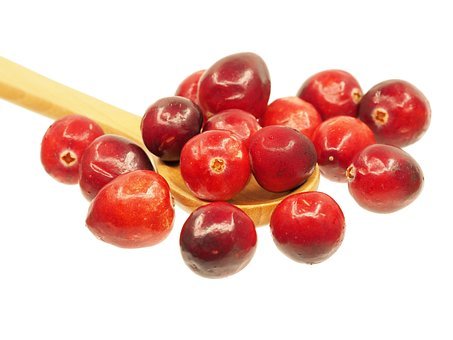Cranberries are popular mostly during the festive holiday season, but mounting evidence on the cranberry's health benefits may increase the fruit's year-round appeal. Some have even described the bright berry as a miracle cure. Find out what cranberries have to offer your health and which type of cranberry products you should consume for optimal benefits.

Nutrient Profile
One cup of fresh cranberries contains a mere 51 calories (mostly from natural sugars) and no fat, cholesterol or sodium, and it provides a good source of fiber (5 grams), vitamin C (24 percent of your daily value) and manganese, according to the USDA nutrient database. However, it's admittedly difficult to eat fresh cranberries or drink unsweetened juice because of the tart flavor. Dried, lightly sweetened cranberries are another healthy choice; one-third cup still provides fiber and vitamin C, but the calories jump to 120 due to added sugar.
Antioxidant Facts
The real power of cranberries comes from their high polyphenol content. Polyphenols are plant-produced chemicals, including flavonoids and flavonols, which act as disease-preventing antioxidants in the body. Researchers have uncovered a specific flavonoid in cranberries, proanthocyanidin, that appears to be their miracle ingredient.
Benefits
Improving urinary tract health is the cranberry's most famous attribute, but cranberries are now recognized for other health aspects as well. Researcher Amy Howell published findings in the journal "Molecular Nutrition & Food Research" that proanthocyanidins prevent E. coli bacteria from starting infections. Other research, notably that of Professor Itzhak Ofek of Tel Aviv University, shows that cranberries have anti-viral properties (to protect against the flu), have the ability to prevent cavities and ease gastric ulcers, and act as anti-cancer agents.
Considerations
Choose fresh, frozen or dried cranberries or 100 percent cranberry juice for the greatest nutrient benefit without the added calories of high fructose corn syrup. Cranberry juice cocktail contains only 27 percent cranberry juice and can have up to 180 calories per 10 oz. serving---roughly equal to a soft drink such as Sprite. Cranberry sauces and jellies are also lower on the nutrient lineup because they are cooked and doused with sugar. Try making your own cranberry juice by purchasing fresh or frozen cranberries and blending them with water, a small amount of sugar or another juice flavor such as orange or apple.
History
Cranberries are native to North America and, according to the Cranberry Institute, have a long history of medicinal and ceremonial use. For hundreds of years, Native Americans used cranberries for treatment of kidney and bladder ailments.
Good article ..
This post has received a 0.14 % upvote from @drotto thanks to: @banjo.